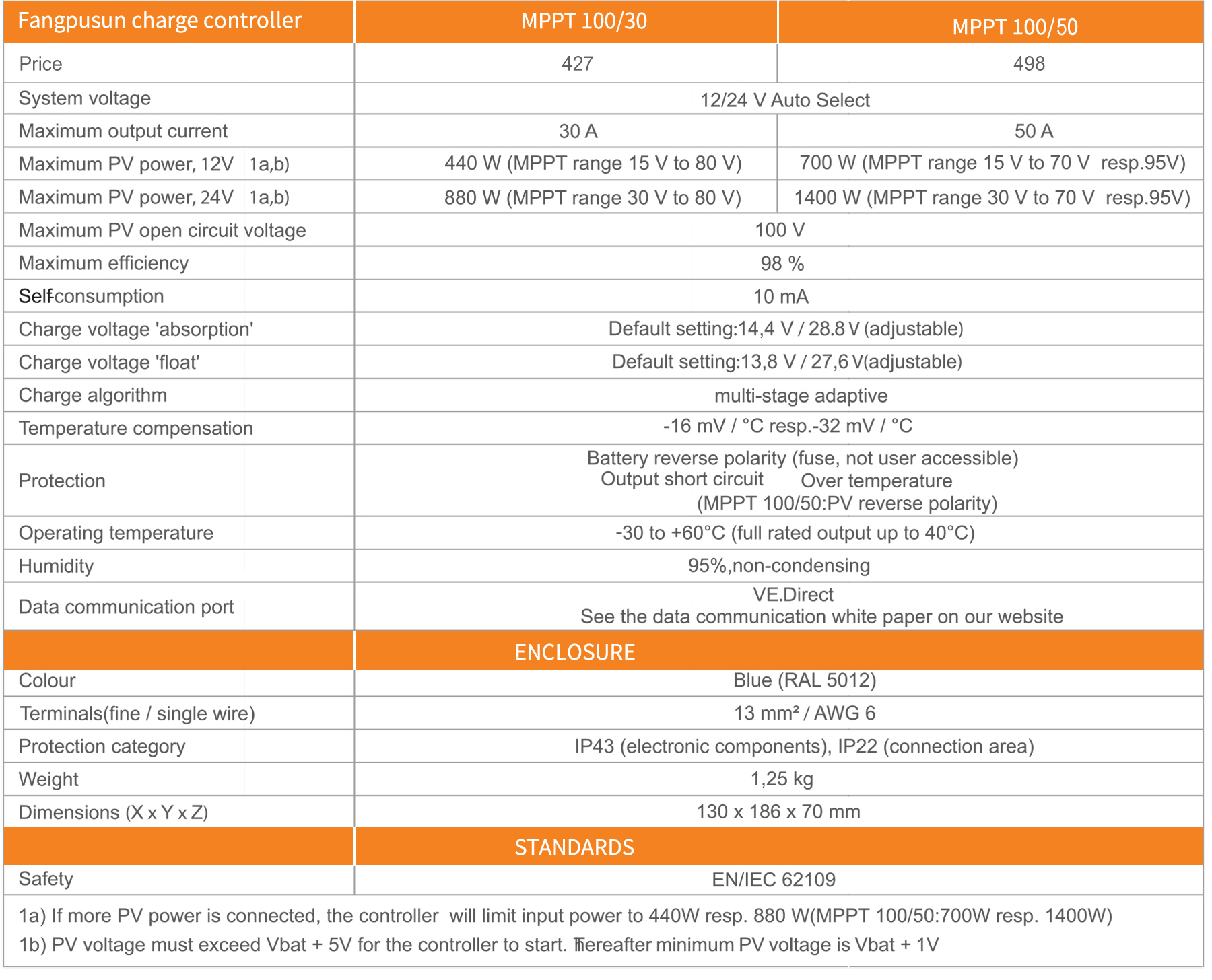Especially in case of a clouded sky, when light intensity is changing continuously, an ultra fast MPPT controller will improve energy harvest by up to 30% compared to PWM charge controllers and by upto 10% compared to slower MPPT controllers.
fangpusun solar charge controller mppt 100-30 /100-50
Untra-fast Maximum Power Point Tracking (MPPT)

Especially in case of a clouded sky, when light intensity is changing continuously, an ultra fast MPPT controller will improve energy harvest by up to 30% compared to PWM charge controllers and by upto 10% compared to slower MPPT controllers.
Advanced Maximum Power Point Detection in case of partial shading conditions

If partial shading occurs, two or more maximum power points may be present on the power-voltage curve. Conventional MPPT's tend to lock toalocal MPP, which may not be the optimum MPP.The innovative fangpusun algorithm will always maximize energy harvest by locking to the optimum MPP.
Outstanding conversion efficiency

No cooling fan. Maximum efficiency exceeds 98%. Full output current up to 40°C (104°F).
Flexible charge algorithm

Fully programmable charge algorithm (see the software page on our website), and eightpreprogrammed algorithms, selectable with a rotagy switch (see manual for details).
Extensive electronic protection

→Over-temperature protection and power derating when temperature is high.
→PV short circuit and PV reverse polarity protection.
→PV reverse current protection.
Internal temperature sensor

Compensates absorption and float charge voltage for temperature.
Real-time data display options

Apple and Android smartphones, tablets and other devices:see the VE.Direct to Bluetooth low energy donegle.
ColorControl pannel
Certificates

Compliant with European Standards (CE)
RoHS compliant
SGS
ISO 9001
Made in China
Overall dimension


Maximum Power Point Tracking


Upper curve:
Output current (1) of a solar panel as function of output voltage (V).
The maximum power point (MPP) is the point
Pmax along the curve where the product | x V reaches its peak.
L ower curve:
Output power P=|x V as function of output voltage.
When using a PWM (not MPPT) controller the output voltage of the solar panel will be nearly
equal to the voltage of the battery, and will be lower than Vmp.
Technical data

